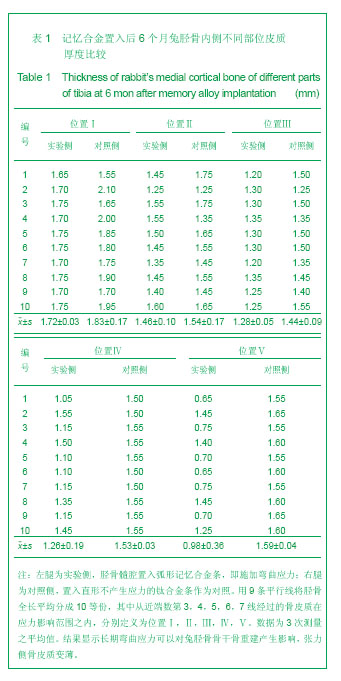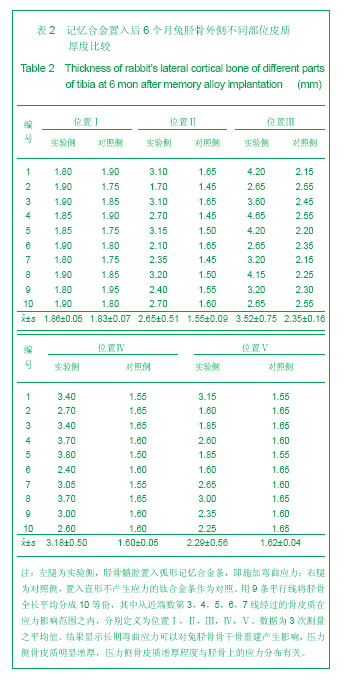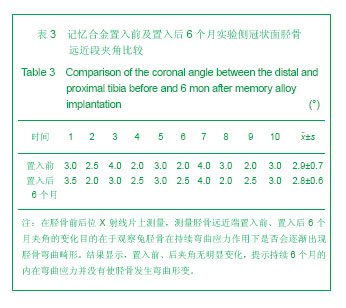| [1] Wolff J, Das Gesetz der. Transformation. der Knochen, Hirschwald, Berlin,1892: 110-157.
[2] Wolff J. The law of bone remodeling. Springer, Berlin, 1896: 57-123.
[3] Hsieh YF, Turner CH. Effects of loading frequency on mechanically induced bone formation. J Bone Miner Res. 2001;16(5) : 918-924.
[4] Burr DB, Turner CH, Naick P, et al. Does microdamage accumulation affect the mechanical properties of bone? J Biomech. 1998;31(4): 337-345.
[5] Saxon LK, Robling AG, Alam I, et al. Mechanosensitivity of the Rat skeleton decreases after a long period of loading, but is improved with time off. Bone. 2005;36(3): 454-464.
[6] 刘迎曦,赵文志,张军,等.不同应力环境下生长期大鼠股骨的生物力学试验研究[J]. 生物医学工程学杂志, 2005,22(3):472-475.
[7] Globus RK, Bikle DD, Morey HE. The temporal response of bone to unloading. Endocrinology. 1986;118:733.
[8] Bloomfield SA, Allen MR, Hogan HA,et al. Site-and Compartment-specific changes in bone with hindlimb unloading in mature adult rats. J Bone. 2002;31(1)∶149.
[9] Kwon JY, Naito H, Matsumoto T, et al. Estimation of change of bone structures after total hip replacement using bone remodeling simulation. Clin Biomech (Bristol, Avon). 2013; 28(5):514-518.
[10] Boerckel JD, Kolambkar YM, Stevens HY, et al. Effects of in vivo mechanical loading on large bone defect regeneration. J Orthop Res. 2012;30(7):1067-1075.
[11] Roshan-Ghias A, Lambers FM, Gholam-Rezaee M, et al. In vivo loading increases mechanical properties of scaffold by affecting bone formation and bone resorption rates. Bone. 2011;49(6):1357-1364.
[12] Yokota H, Leong DJ, Sun HB. Mechanical loading: bone remodeling and cartilage maintenance. Curr Osteoporos Rep. 2011;9(4):237-242.
[13] Lee CS, Szczesny SE, Soslowsky LJ. Remodeling and repair of orthopedic tissue: role of mechanical loading and biologics: part II: cartilage and bone. Am J Orthop (Belle Mead NJ). 2011;40(3):122-128.
[14] Robling AG, Turner CH. Mechanical signaling for bone modeling and remodeling. Crit Rev Eukaryot Gene Expr. 2009;19(4):319-338.
[15] Epari DR, Duda GN, Thompson MS. Mechanobiology of bone healing and regeneration: in vivo models. Proc Inst Mech Eng H. 2010;224(12):1543-1553.
[16] Moukoko D, Pourquier D, Pithioux M, et al. Influence of cyclic bending loading on in vivo skeletal tissue regeneration from periosteal origin. Orthop Traumatol Surg Res. 2010;96(8): 833-839.
[17] Papachroni KK, Karatzas DN, Papavassiliou KA, et al. Mechanotransduction in osteoblast regulation and bone disease. Trends Mol Med. 2009;15(5):208-216.
[18] Drenjan?evi? I, Davidovi? Cvetko E. Influence of physical activity to bone metabolism. Med Glas (Zenica). 2013; 10(1):12-19.
[19] Boccafoschi F, Mosca C, Ramella M, et al. The effect of mechanical strain on soft (cardiovascular) and hard (bone) tissues: common pathways for different biological outcomes. Cell Adh Migr. 2013;7(2):165-173.
[20] Rasouli MR, Porat MD, Hozack WJ, et al. Proximal femoral replacement and allograft prosthesis composite in the treatment of periprosthetic fractures with significant proximal bone loss. Orthop Surg. 2012;4(4):203-210.
[21] Buck DW 2nd, Dumanian GA. Bone biology and physiology: Part I. The fundamentals. Plast Reconstr Surg. 2012;129(6): 1314-1320.
[22] Robling AG. The interaction of biological factors with mechanical signals in bone adaptation: recent developments. Curr Osteoporos Rep. 2012;10(2):126-131.
[23] Jaimes C, Jimenez M, Shabshin N, et al. Taking the stress out of evaluating stress injuries in children. Radiographics. 2012; 32(2):537-555.
[24] Zuo C, Huang Y, Bajis R, et al. Osteoblastogenesis regulation signals in bone remodeling. Osteoporos Int. 2012;23(6): 1653-1663.
[25] Del Fattore A, Teti A, Rucci N. Bone cells and the mechanisms of bone remodelling. Front Biosci (Elite Ed). 2012;4:2302-2321.
[26] Beck RT, Illingworth KD, Saleh KJ. Review of periprosthetic osteolysis in total joint arthroplasty: an emphasis on host factors and future directions. J Orthop Res. 2012;30(4): 541-546.
[27] Al Nazer R, Lanovaz J, Kawalilak C, et al. Direct in vivo strain measurements in human bone-a systematic literature review. J Biomech. 2012;45(1):27-40.
[28] Andrade AC, Chrysis D, Audi L, et al. Methods to study cartilage and bone development. Endocr Dev. 2011;21:52-66.
[29] Liedert A, Kaspar D, Augat P, et al. Mechanobiology of Bone Tissue and Bone Cells. In: Kamkin A, Kiseleva I, editors. Mechanosensitivity in Cells and Tissues. Moscow: Academia, 2005.
[30] Dodge T, Wanis M, Ayoub R, et al. Mechanical loading, damping, and load-driven bone formation in mouse tibiae. Bone. 2012;51(4):810-818.
[31] Szczesny SE, Lee CS, Soslowsky LJ. Remodeling and repair of orthopedic tissue: role of mechanical loading and biologics. Am J Orthop (Belle Mead NJ). 2010;39(11):525-530.
[32] Knothe Tate ML, Dolejs S. Multiscale mechanobiology of de novo bone generation, remodeling and adaptation of autograft in a common ovine femur model. J Mech Behav Biomed Mater. 2011;4(6):829-840.
[33] Avrunin AS, Tikhilov RM. [Osteocytic bone remodeling: history of the problem, morphological markers]. Morfologiia. 2011;139(1):86-94.
[34] Idhammad A, Abdali A, Alaa N. Computational simulation of the bone remodeling using the finite element method: an elastic-damage theory for small displacements. Theor Biol Med Model. 2013;10:32.
[35] Waldorff EI, Christenson KB, Cooney LA, et al. Microdamage repair and remodeling requires mechanical loading. J Bone Miner Res. 2010;25(4):734-745.
[36] Cheng HY, Chu KT, Shen FC, et al. Stress effect on bone remodeling and osseointegration on dental implant with novel nano/microporous surface functionalization. J Biomed Mater Res A. 2013;101(4):1158-1164.
[37] Robling AG, Castillo AB, Turner CH. Biomechanical and molecular regulation of bone remodeling. Annu Rev Biomed Eng. 2006;8:455-498.
[38] Bougherara H, Klika V, Marsík F, et al. New predictive model for monitoring bone remodeling. J Biomed Mater Res A. 2010; 95(1):9-24.
[39] Wang C, Han J, Li Q, et al. Simulation of bone remodelling in orthodontic treatment. Comput Methods Biomech Biomed Engin. 2012. [Epub ahead of print]
[40] Pérez MA, Fornells P, Doblaré M, et al. Comparative analysis of bone remodelling models with respect to computerised tomography-based finite element models of bone. Comput Methods Biomech Biomed Engin. 2010;13(1):71-80.
[41] Mine Y, Makihira S, Nikawa H, et al. Impact of titanium ions on osteoblast-, osteoclast- and gingival epithelial-like cells. J Prosthodont Res. 2010;54(1):1-6.
[42] Chen JH, Liu C, You L, et al. Boning up on Wolff's Law: mechanical regulation of the cells that make and maintain bone. J Biomech. 2010;43(1):108-118. |



.jpg)
.jpg)
.jpg)
.jpg)
.jpg)
.jpg)